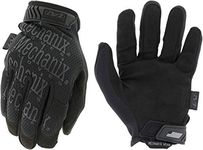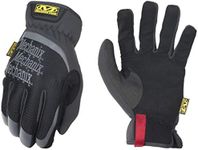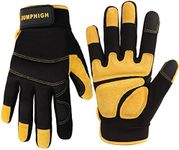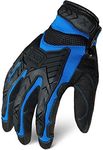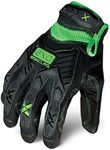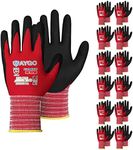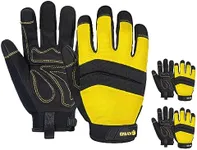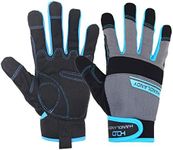Buying Guide for the Best Mechanics Gloves
Choosing the right mechanics gloves is crucial for ensuring safety, comfort, and efficiency while working. Mechanics gloves are designed to protect your hands from various hazards such as cuts, abrasions, chemicals, and impacts. They also provide a better grip and dexterity, which is essential for handling tools and parts. When selecting mechanics gloves, consider the specific tasks you will be performing and the environment in which you will be working. Here are some key specifications to consider when choosing the best mechanics gloves for your needs.MaterialThe material of mechanics gloves is important because it determines the level of protection, comfort, and durability. Common materials include leather, synthetic fabrics, and rubber. Leather gloves offer excellent durability and protection but may be less flexible. Synthetic fabrics like nylon and polyester provide good dexterity and breathability, making them suitable for tasks requiring precision. Rubber gloves are ideal for chemical resistance and waterproofing. Choose the material based on the specific hazards you will encounter and the level of dexterity required for your tasks.
Cut ResistanceCut resistance is a crucial spec for mechanics gloves, especially if you are working with sharp tools or materials. Gloves are rated on a scale from A1 to A9, with A1 offering the least cut resistance and A9 offering the highest. If your work involves handling sharp objects or cutting tools, opt for gloves with higher cut resistance ratings. For general mechanical tasks, lower cut resistance may suffice. Assess the level of risk in your work environment to determine the appropriate cut resistance rating.
GripGrip is essential for handling tools and parts securely. Mechanics gloves often feature textured surfaces or coatings like nitrile or latex to enhance grip. A good grip prevents slippage and improves control, reducing the risk of accidents. If your tasks involve handling oily or wet objects, look for gloves with specialized grip coatings. For dry environments, standard textured gloves may be sufficient. Consider the nature of the objects you will be handling to choose the right grip type.
DexterityDexterity refers to the ability to perform precise movements with your fingers while wearing gloves. High dexterity gloves are thin and flexible, allowing for better control and manipulation of small parts. These gloves are ideal for tasks that require fine motor skills, such as assembling intricate components. However, they may offer less protection compared to thicker gloves. If your work involves detailed tasks, prioritize dexterity. For heavy-duty tasks, you may need to balance dexterity with protection.
Impact ProtectionImpact protection is important if you are working in environments where your hands are at risk of being struck or crushed. Gloves with impact protection feature reinforced areas, such as padded knuckles and fingers, to absorb and distribute the force of impacts. This reduces the risk of injuries from falling objects or heavy tools. If your work involves frequent exposure to impact hazards, choose gloves with robust impact protection. For less hazardous environments, standard gloves may be adequate.
Chemical ResistanceChemical resistance is a key spec if you are working with hazardous chemicals or solvents. Gloves with chemical resistance are made from materials like nitrile, latex, or PVC, which provide a barrier against harmful substances. The level of chemical resistance varies, so it's important to choose gloves that are rated for the specific chemicals you will be handling. If your tasks involve exposure to chemicals, prioritize gloves with high chemical resistance. For tasks without chemical exposure, this spec may be less critical.
Comfort and FitComfort and fit are essential for prolonged use of mechanics gloves. Gloves that fit well reduce hand fatigue and improve overall performance. Look for gloves with adjustable closures, such as Velcro straps, to ensure a snug fit. Consider the glove size and shape to match your hand dimensions. Comfortable gloves should also have breathable materials to prevent sweating and irritation. If you will be wearing gloves for extended periods, prioritize comfort and fit to maintain productivity and avoid discomfort.
